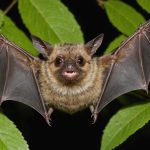Overview of UK Wildlife Conservation Efforts and Their Focus on Animal Behavior
UK wildlife conservation is driven by clear objectives: protecting endangered species, restoring habitats, and maintaining biodiversity. Central to these efforts is understanding animal behavior, which provides insight into how species interact with their environment and respond to threats. This knowledge shapes UK conservation strategies, ensuring interventions are effective and tailored.
Monitoring animal behavior is pivotal to conservation interventions. Changes in feeding, mating, or migration patterns often indicate environmental stress or recovery, allowing conservationists to assess progress. For example, observing nesting habits helps guide habitat restoration efforts.
Additional reading : What new discoveries have been made about UK bat species?
UK conservation strategies increasingly integrate behavioral studies to refine action plans. By tracking specific behaviors, such as breeding success or territoriality, interventions can be adjusted in real time. This adaptive approach improves outcomes and resource allocation.
In summary, animal behavior is not just an ancillary study but a central tool for UK wildlife conservation. It informs priorities, guides interventions, and measures success, making programs more dynamic and effective in preserving the UK’s natural heritage.
Additional reading : How is citizen involvement shaping wildlife conservation in the UK?
Impact of Habitat Restoration on Animal Behavior
Habitat restoration in the UK has notable effects on native animal species, altering their movement patterns and resource use. When habitats are restored, animals often exhibit significant behavioral adaptation as they adjust to renewed environments that offer increased complexity and resources. For example, the increased structural diversity in restored habitats encourages more extensive use of space and changes in daily activity rhythms.
Changes in foraging and breeding behaviors commonly emerge due to the complex habitats created by restoration efforts. Animals tend to exploit new food sources and safer breeding grounds, contributing to enhanced survival rates. In particular, native bird species show marked behavioral shifts after wetland restoration, such as altered flight paths and nesting choices that improve reproductive success.
These behavioral adaptations are essential indicators of wildlife recovery. They demonstrate how species respond not only to physical habitat improvements but also to the restoration of ecological functions. Understanding these changes helps conservationists optimize restoration practices, ensuring that native animal species thrive within revitalized ecosystems.
Influence of Protected Areas and Reserves on Animal Activities
Protected areas UK and reserves create essential safe zones where animal movement faces less human interference. These environments reduce disturbances such as noise, habitat fragmentation, and light pollution, enabling wildlife to resume natural behaviors more confidently. The result is often a marked improvement in population stability, as animals access resources with minimal threats.
Increased safety fosters the expansion of animal territories. Species in protected areas tend to roam wider, exploiting available habitats fully and engaging more freely in social behaviors critical for reproduction and community dynamics. For example, mammalian nocturnality in UK woodlands within reserves has shifted, with animals emerging earlier in the evening and extending activity periods. This change reflects a psychological and physiological response to safer surroundings created by protected areas UK.
Studies confirm that reserves not only shield wildlife but also actively encourage behavioral adaptations improving survivability. With diminished human presence, animals alter daily rhythms, interact more socially, and maintain larger territories—factors essential for resilient ecosystems inside protected zones. Understanding these dynamics aids in shaping conservation policies that prioritize habitat protection and animal-friendly management.
Behavioral Outcomes from Rewilding Projects
Rewilding UK initiatives often focus on reintroduction of keystone species, which trigger significant shifts in animal behavior. These reintroduced predators or ecosystem engineers cause trophic cascades—chains of ecological effects that ripple through food webs. For example, with predator return, prey species modify their foraging patterns and increase vigilance to avoid predation, fundamentally altering ecosystem dynamics.
One compelling case is the reintroduction of beavers in the UK. Beavers modify waterways, creating new aquatic habitats that influence behavior across multiple species. Their dam-building activity leads to changes in water flow, which affects fish, birds, and amphibians by expanding shelter and feeding options. This engineering role spurs behavioral adaptations, such as altered migratory routes and enhanced use of newly formed wetlands.
Predator-prey interactions adjust similarly; prey species often become more alert or shift habitats to reduce encounters with predators, a behavior change with cascading effects on vegetation and other species. These intricate behavioral shifts emphasize how rewilding UK projects produce widespread ecological benefits by restoring natural interactions and ecosystem functions.
Research Studies and Expert Insights on Behavioral Changes
Recent conservation research UK has demonstrated clear connections between habitat protection and observable behavioral shifts in wildlife. Notably, long-term behavioral studies reveal how species adapt their feeding, mating, and migration patterns in response to improved environmental conditions. These studies often use comprehensive field observations combined with rigorous data analysis to provide robust scientific evidence of adaptation.
Experts such as leading ecologists and wildlife managers emphasize that behavioral changes are not merely incidental but represent critical responses to conservation measures. For example, UK ecologists highlight how species like otters have expanded their territories and altered habitat use due to water quality improvements. Similarly, woodland birds have adjusted nesting behaviors aligned with reforestation efforts.
Such insights go beyond short-term effects, documenting progressive trends over decades. This growing body of research solidifies the understanding that effective conservation leads to measurable, positive behavioral changes in animal populations. Stakeholders can leverage these findings to improve planning and support adaptive management strategies that benefit biodiversity sustainably across the UK.
Challenges and Limitations in Measuring Conservation Impact on Behavior
Measuring the impact of conservation efforts on animal behavior presents several notable challenges. One primary difficulty is the attribution of specific behavioral changes directly to conservation interventions. Animal behavior is influenced by many factors—environmental variability, social dynamics, and human activities—making it hard to isolate conservation as the sole cause.
Data collection is another significant limitation. Monitoring animal behavior often requires extensive resources and expertise, with variability between species complicating standardized approaches. Some species are elusive or nocturnal, creating data gaps that reduce accuracy. Additionally, seasonal and geographic differences can skew results.
Long-term monitoring is crucial to understand true behavioral trends following conservation. Short-term studies may miss gradual or subtle changes, underscoring the need for adaptive management that incorporates ongoing behavioral data. Implementing flexible monitoring frameworks allows conservationists to adjust strategies in real time based on observed behavioral responses.
In summary, this complexity demands robust, species-specific methods and sustained effort to overcome challenges in conservation measurement, ensuring that behavioral impacts are accurately assessed and effectively integrated into management decisions.



